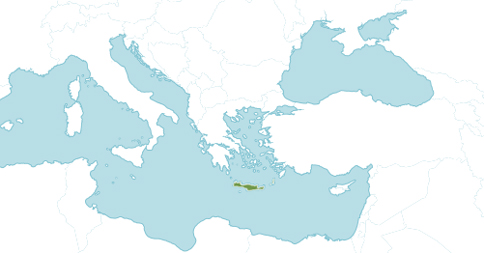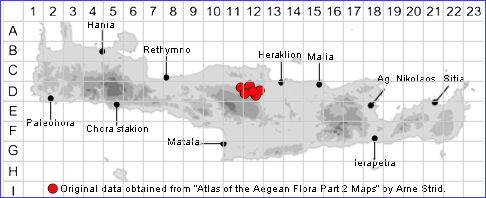
SPECIES DESCRIPTION
ALYSSUM BALDACCII
Family and Genus:- See- CRUCIFERAE/Sect. ODONTARRHENA
Common Names:- None
Homotypic Synonyms:- Odontarrhena baldaccii.
Meaning:- Alyssum (Gr) Pacifier, ancient Greek name meaning without-fury -
alluding to the supposed medicinal properties against rabies.
Baldaccii (L) For Antonio Baldaccii (1867-1950) of the Bologna
Botanic Garden. Italy.
General description:- A subshrubby species
Stem:-
1) 20-50 cm, with some, long non-flowering.
Leaves:-
1) Cauline,15-25 x 2-2·5 mm, oblanceolate, obtuse, greenish above, white beneath.
2) Basal, slightly smaller.
Flowers:-
1) Racemes of small yellow flowers.
2) Petals 2·5-3 mm.
3) Sepals 1·5-2 mm.
4) Filaments with a multi-dentate appendage.
5) Style 1-1·5 mm.
Fruit:-
1) Silicula, 4-4·5 x 2·5-3·3 mm, broadly elliptical to obovate, obtuse or emarginate.
2) Septum, frequently asymmetrical in outline.
3) Valves asymmetrically inflated, sparsely hairy; hairs with c. 15 rays.
4) Ovules solitary in each compartment.
Key features:-
1) Petals 2-3 mm; sepals 1·5-2 mm.
2) Filaments with a multi-dentate appendage.
3) Septum of the silicula frequently asymmetrical in outline.
Habitat:- Rocky slopes and screes, open dry shrubby vegetation and gravelly road
verges, mainly on ultra-mafic substrate. 300-800 m.
Distribution:- Endemic to C. Crete, known only in the area of serpentine rocks
around Gonies, on the north-eastern side of Psiloritis. Rare.
Flowering time:- May-June
Photos by:- Dimokratia Vrentzou & Christopher Cheiladakis
Status:-
Conservation status (for threatened species): Rare (R) according to the Red Data
Book of Rare and Threatened Plants of Greece (1995).
Rare (R) according to IUCN 1997.


GLOBAL DISTRIBUTION

Native